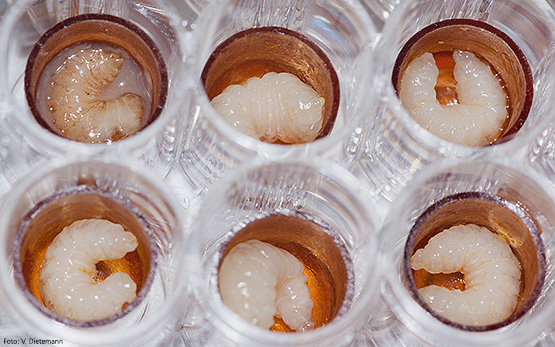Our studies have contributed to the improved diagnosis of European foul brood. The methods developed at the Swiss Bee Research Centre are applied at national level to confirm suspicious cases and instigate official remediation measures where necessary.They are also used at international level in research.
We also study the distribution of cases over Swiss territory, the effect of the bacterium on the physiology of the larvae, the virulence of the bacterium, and the role of secondary infections caused by other bacteria. At the level of control methods, we test and certify disinfection products, test potential medication, and study the resistance of certain breeding lines to this pathogen with the aim of stemming the progression of this disease in Switzerland and elsewhere.

Differences in virulence of M. plutonius
European foulbrood is a bacterial brood disease caused by Melissococcus plutonius. In this article, the virulence of 16 different M. plutonius isolates was tested in a standardized in vitro infection assay on honey bee larvae. Three of the tested isolates from Switzerland showed increased virulence. In the genome of these three highly virulent isolates previously the gene for the production of a toxin was identified. This gene might therefore be an important virulence factor of M. plutonius.





